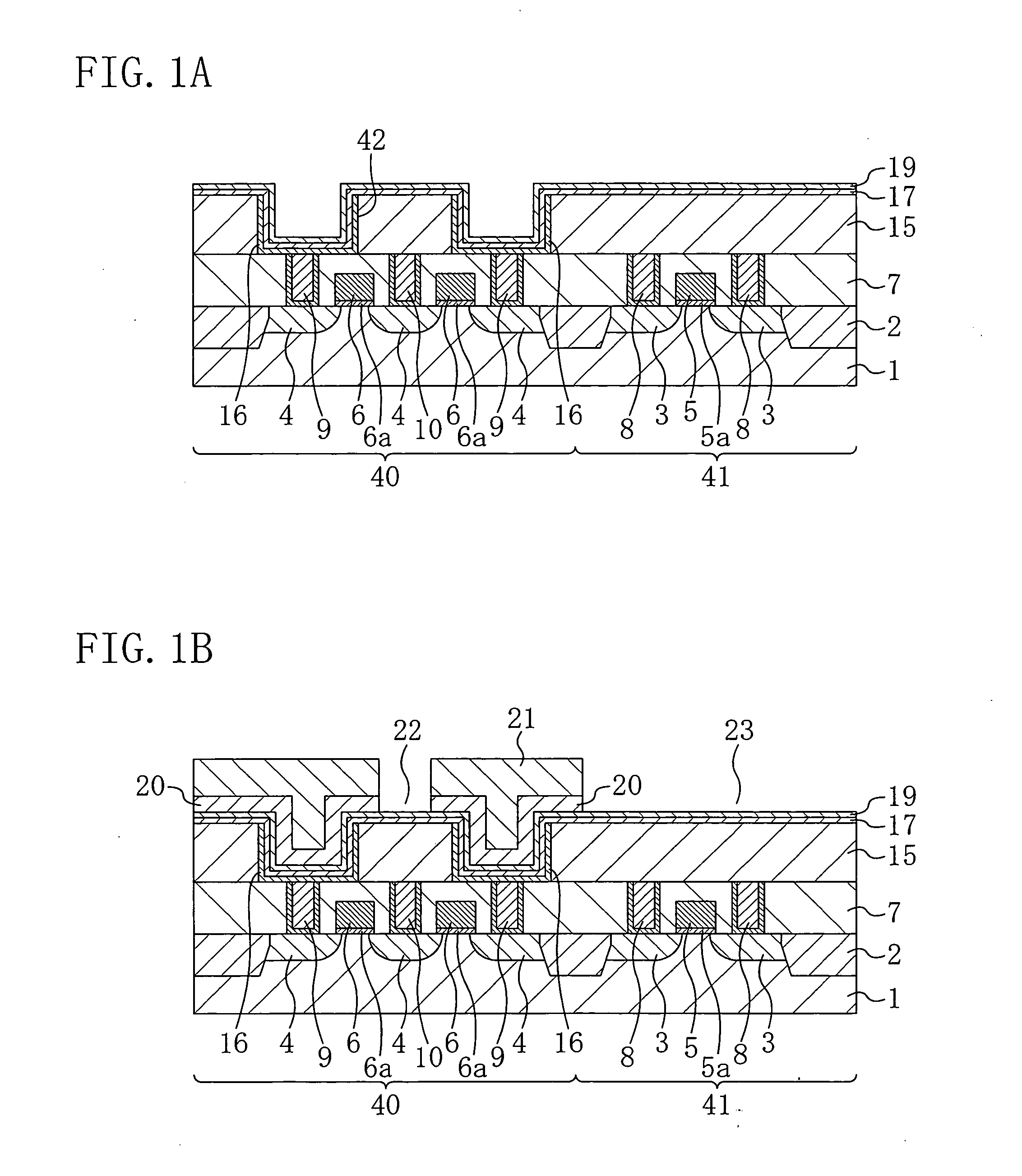Semiconductor device and method for fabricating the same
a semiconductor and device technology, applied in semiconductor devices, capacitors, electrical equipment, etc., can solve the problems of resolution failure, difficult control of the depth of the groove, and opening failure in some of the grooves, so as to increase parasitic capacitance and control the depth of the plate contact more accurately.
- Summary
- Abstract
- Description
- Claims
- Application Information
AI Technical Summary
Benefits of technology
Problems solved by technology
Method used
Image
Examples
first embodiment
[0038]FIGS. 1A, 1B, 2A, and 2B are sectional views showing fabrication steps of a DRAM-embedded semiconductor device according to a first embodiment of the present invention.
[0039] In the fabrication method of the first embodiment, first, in the step shown in FIG. 1A, an isolation region (STI) 2 is formed in a p-type semiconductor substrate 1. Areas of the p-type semiconductor substrate 1 surrounded with the isolation region 2 are formed with doped source and drain layers 3 and 4, respectively. Above a portion of the p-type semiconductor substrate 1 located in a DRAM region 40, a gate electrode 6 is formed with a gate insulating film 6a interposed therebetween, thereby forming a DRAM memory cell transistor. Above a portion of the p-type semiconductor substrate 1 located in a logic region 41, a gate electrode 5 is formed with a gate insulating film 5a interposed therebetween, thereby forming a logic transistor. Thereafter, a first interlayer insulating film 7 covering the gate elect...
PUM
 Login to View More
Login to View More Abstract
Description
Claims
Application Information
 Login to View More
Login to View More - R&D
- Intellectual Property
- Life Sciences
- Materials
- Tech Scout
- Unparalleled Data Quality
- Higher Quality Content
- 60% Fewer Hallucinations
Browse by: Latest US Patents, China's latest patents, Technical Efficacy Thesaurus, Application Domain, Technology Topic, Popular Technical Reports.
© 2025 PatSnap. All rights reserved.Legal|Privacy policy|Modern Slavery Act Transparency Statement|Sitemap|About US| Contact US: help@patsnap.com



